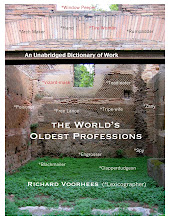The person in charge of the noble loaves, crusts, and crumbs.
“The functions or groupings, which the Middle Ages designated by the words ‘estate’ and ‘order,’ are of very diverse natures. There are, first of all, the estates of the realm, but there are also the trades, the state of matrimony and that of virginity, the state of sin. At court there are the ‘four estates of body and mouth’: bread-masters, cup-bearers, carvers, and cooks. In the Church there are sacerdotal orders and monastic orders. Finally, there are the different orders of chivalry. That which, in medieval thought, establishes unity in the very dissimilar meanings of the word, is the conviction that every one of these groupings represents a divine institution, an element of the organism of Creation emanating from the will of God, constituting an actual entity, and being, at bottom, as venerable as the angelic hierarchy.”
J. Huizinga, The Waning of the Middle Ages (1924).

No comments:
Post a Comment